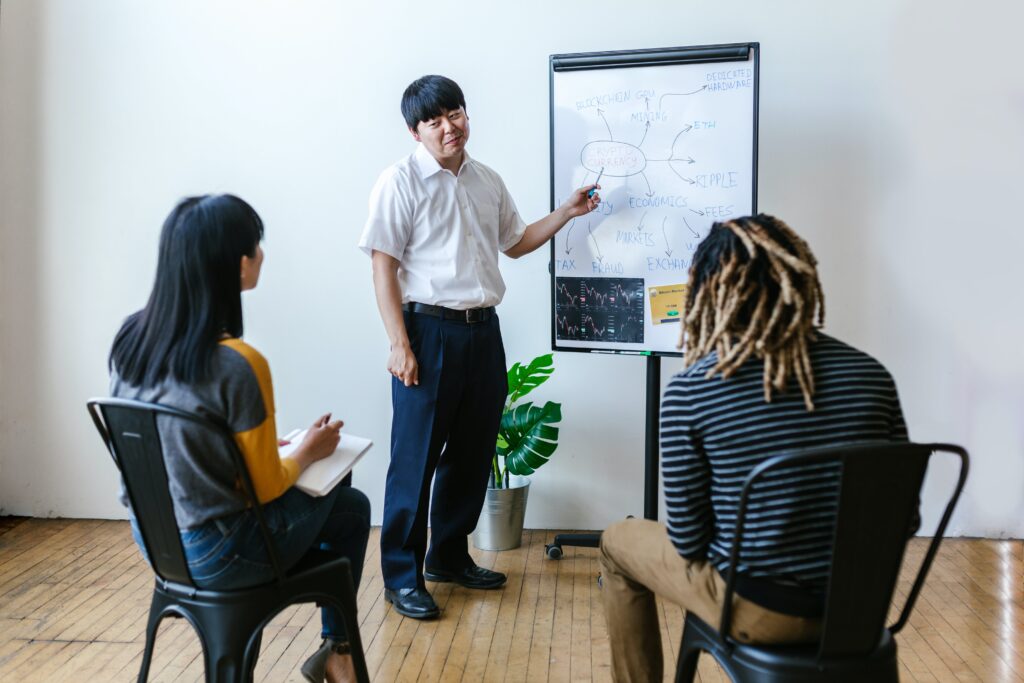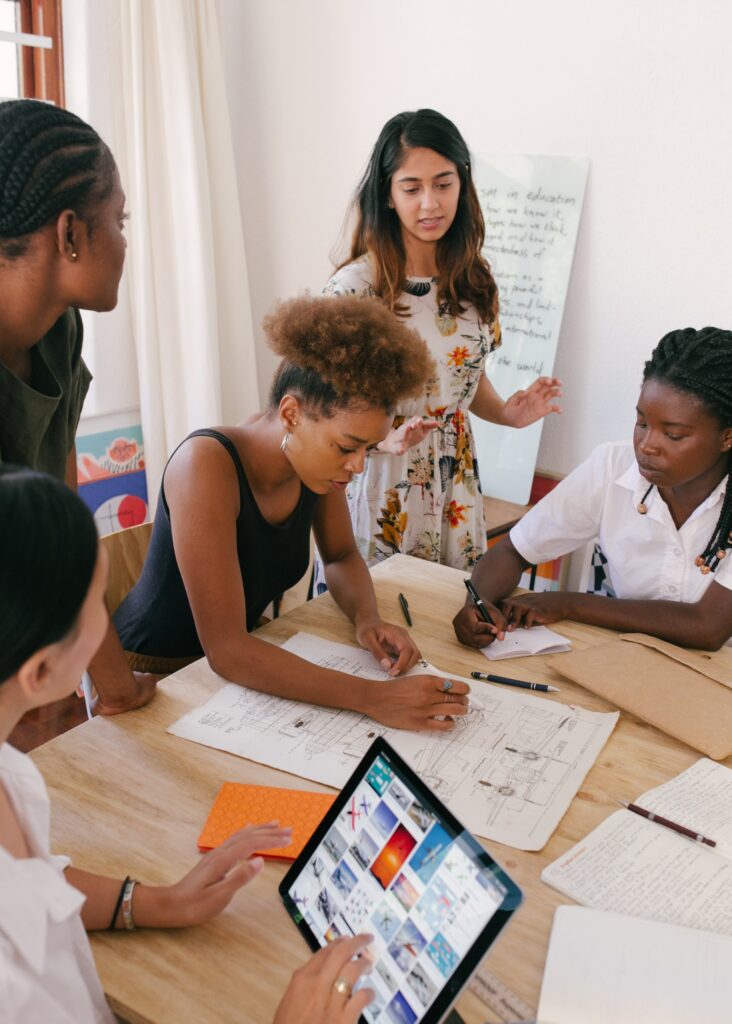Have you ever wondered why some people find joy in the act of learning? What is it about acquiring new knowledge that brings a sense of satisfaction and pleasure? In this article, we will explore the concept of learning pleasure and delve into its significance in our lives. From uncovering the brain’s reward system to understanding the role of curiosity, we will embark on a journey to unravel the meaning behind this delightful sensation. So fasten your seatbelt and get ready to unlock the door to a world where learning becomes a source of sheer pleasure and excitement.
Understanding Learning Pleasure
Learning pleasure refers to the positive emotional experience and enjoyment that individuals derive from the process of acquiring knowledge and skills. It is a state of happiness and satisfaction that comes from engaging in learning activities, whether it be studying a subject of interest, mastering a new skill, or discovering new information. Learning pleasure is an essential aspect of education as it not only enhances motivation and engagement but also contributes to better learning outcomes and long-lasting retention of knowledge.
Defining Learning Pleasure
Learning pleasure can be defined as the emotional and psychological satisfaction one experiences when actively engaging with the learning process. It is an intrinsic motivation that drives individuals to seek out new knowledge and engage in intellectual pursuits. Learning pleasure is characterized by a sense of curiosity, interest, and enjoyment, making the process of learning more enjoyable and fulfilling.

The Psychological Aspect of Learning Pleasure
Learning pleasure is deeply rooted in psychology and is influenced by various psychological factors. The positive emotional experience that comes from learning is often associated with the release of neurotransmitters such as dopamine, which is linked to feelings of reward and pleasure. The psychological aspect of learning pleasure also involves the cognitive processes of attention, memory, and motivation, which play a crucial role in shaping the overall learning experience.
Factors Influencing Learning Pleasure
Several factors contribute to the experience of learning pleasure. These factors can be broadly categorized into intrinsic motivation, extrinsic motivation, interest and relevance, curiosity, and autonomy.
Intrinsic Motivation
Intrinsic motivation refers to the internal drive and desire to engage in an activity for its own sake, without any external rewards or incentives. When individuals are intrinsically motivated to learn, they find the learning process inherently enjoyable and satisfying. Intrinsic motivation is often fueled by personal interests, curiosity, and the desire for personal growth and mastery.
Extrinsic Motivation
Extrinsic motivation, on the other hand, involves engaging in an activity for external rewards or benefits. This can include grades, praise, or recognition from others. While extrinsic motivation can initially inspire individuals to engage in learning activities, it is the presence of intrinsic motivation that sustains the pleasure and enjoyment of learning in the long run.
Interest and Relevance
Having a genuine interest in the subject matter being learned is a significant factor in learning pleasure. When individuals are interested in a topic, they are more likely to actively engage in the learning process, seek out additional resources, and invest more effort into mastering the subject. Relevance, or perceiving the information or skills being learned as personally meaningful and applicable, also enhances learning pleasure by increasing motivation and engagement.
Curiosity
Curiosity is often described as the fuel for learning pleasure. When individuals are curious, they have a natural desire to explore, discover, and seek out new knowledge. Curiosity drives individuals to actively engage with learning materials, ask questions, and seek answers. It adds an element of excitement and anticipation, making the learning experience more pleasurable.
Autonomy
Having a sense of autonomy and control over the learning process can greatly enhance learning pleasure. When individuals are given the freedom to choose their learning goals, methods, and pace, they have a greater sense of ownership and agency. Autonomy allows individuals to align their learning experiences with their personal preferences and interests, leading to increased enjoyment and satisfaction.

Enhancing Learning Pleasure
Creating an environment that fosters learning pleasure is crucial for educators and learners alike. To enhance learning pleasure, educators can focus on creating an engaging learning environment, utilizing effective teaching methods, promoting active learning, and encouraging collaborative learning.
Creating an Engaging Learning Environment
An engaging learning environment is one that stimulates curiosity, promotes exploration, and provides opportunities for meaningful interactions. This can be achieved by incorporating hands-on activities, real-world examples, multimedia resources, and interactive discussions into the learning process. By creating a stimulating and dynamic atmosphere, educators can captivate learners’ interest and make the learning experience more enjoyable.
Utilizing Effective Teaching Methods
Effective teaching methods can greatly contribute to learning pleasure. Employing a variety of instructional strategies, such as active learning techniques, problem-solving exercises, and group discussions, can enhance engagement and promote deeper understanding. By catering to different learning styles and preferences, educators can create a more inclusive and enjoyable learning experience.
Promoting Active Learning
Active learning involves actively engaging with the learning material through observation, analysis, and application of knowledge. It encourages learners to take an active role in their own learning, promoting a sense of agency and ownership. Active learning methods such as project-based learning, case studies, and simulations can make the learning process more dynamic and enjoyable.
Encouraging Collaborative Learning
Collaborative learning, where learners work together in groups or pairs, can enhance learning pleasure by fostering social interaction, teamwork, and peer support. Collaborative activities such as group projects, discussions, and problem-solving tasks encourage active participation and provide an opportunity for learners to share ideas, collaborate, and learn from each other.
Effects of Learning Pleasure
Experiencing learning pleasure has several positive effects on individuals’ learning outcomes, retention of knowledge, and emotional well-being.
Improved Learning Outcomes
When individuals experience learning pleasure, they are more likely to be motivated, engaged, and actively involved in the learning process. This increased level of engagement leads to improved learning outcomes, as learners are more attentive, open to new information, and willing to invest effort into understanding and mastering the subject matter.
Long-lasting Retention of Knowledge
Learning pleasure enhances long-term retention of knowledge. When individuals enjoy the learning process and find it pleasurable, they are more likely to continue engaging with the subject matter even beyond the immediate learning context. This leads to a deeper level of learning and better retention of knowledge over time.
Positive Emotional Well-being
Learning pleasure has a significant impact on individuals’ emotional well-being. The positive experiences and emotional satisfaction derived from learning contribute to feelings of happiness, contentment, and fulfillment. Engaging in enjoyable and pleasurable learning experiences can alleviate stress, boost self-confidence, and promote a positive mindset.

Measuring Learning Pleasure
Measuring learning pleasure can be challenging due to its subjective nature. However, there are both subjective and objective measures that can provide insights into individuals’ levels of learning pleasure.
Subjective Measures
Subjective measures involve self-reporting through questionnaires, surveys, or interviews. These measures assess individuals’ perceptions, attitudes, and overall satisfaction with the learning process. Subjective measures provide valuable insights into individuals’ emotional experiences and can help identify factors that contribute to or hinder learning pleasure.
Objective Measures
Objective measures involve observing and analyzing individuals’ behaviors and responses during learning activities. This can include analyzing engagement levels, motivation, concentration, and participation. Objective measures can provide a more objective assessment of learning pleasure by examining observable indicators of engagement and enjoyment.
Learning Pleasure vs. Learning Satisfaction
While learning pleasure and learning satisfaction are related concepts, they have distinct differences.
Distinguishing Between Pleasure and Satisfaction
Learning pleasure refers to the immediate emotional experience and enjoyment derived from engaging in the learning process. It is a positive emotional state that is experienced in the present moment. Learning satisfaction, on the other hand, refers to the overall evaluation of the learning experience as a whole. It encompasses factors such as achievement, fulfillment of learning goals, and the extent to which the learning experience meets one’s expectations.
The Relationship Between Pleasure and Satisfaction
Learning pleasure and learning satisfaction are interconnected and mutually reinforcing. The experience of learning pleasure contributes to overall learning satisfaction, as individuals who find the learning process pleasurable are more likely to feel satisfied with their learning outcomes. Conversely, a satisfying learning experience can enhance future learning pleasure by reinforcing positive associations and motivations towards learning.

The Role of Teachers in Fostering Learning Pleasure
Teachers play a crucial role in fostering learning pleasure in their students. By creating a positive learning atmosphere, providing feedback and encouragement, and recognizing and catering to individual differences, educators can cultivate an environment that nurtures and enhances learning pleasure.
Creating a Positive Learning Atmosphere
Creating a positive learning atmosphere involves establishing a supportive and inclusive environment where students feel safe, respected, and valued. This can be achieved through positive teacher-student interactions, cultivating a sense of belonging, and promoting a growth mindset. A positive learning atmosphere encourages students to feel comfortable and motivated to engage in the learning process, enhancing their overall learning pleasure.
Providing Feedback and Encouragement
Providing timely and constructive feedback is crucial for fostering learning pleasure. Feedback helps students understand their progress, identify areas for improvement, and build confidence in their abilities. Additionally, encouragement and praise for effort and achievements can further motivate students and enhance their enjoyment of the learning experience.
Recognizing and Catering to Individual Differences
Every student is unique, with different learning preferences, strengths, and challenges. Recognizing and catering to these individual differences is essential for fostering learning pleasure. By offering flexible learning options, accommodating diverse learning styles, and tailoring teaching approaches to meet individual needs, teachers can create a learning environment that is engaging and enjoyable for all students.
Promoting Lifelong Learning Through Pleasure
Learning pleasure plays a vital role in promoting lifelong learning and a love for knowledge. By cultivating a love for learning and emphasizing continual growth and skill development, individuals can continue to derive pleasure from the learning process throughout their lives.
Developing a Love for Learning
Developing a love for learning starts from an early age and continues throughout life. By nurturing curiosity and promoting a passion for knowledge, educators and parents can instill a lifelong appreciation for learning. Encouraging exploration, providing opportunities for hands-on learning, and celebrating intellectual curiosity can foster the joy of learning and promote lifelong learning habits.
Continual Growth and Skill Development
Learning pleasure can be sustained by emphasizing the importance of continual growth and skill development. Lifelong learners embrace the idea that learning is a continuous process and actively seek out opportunities to expand their knowledge and acquire new skills. By setting goals, challenging oneself, and regularly engaging in intellectual pursuits, individuals can maintain the pleasure of learning and experience the satisfaction that comes with personal growth.

Challenges to Learning Pleasure
Despite its numerous benefits, learning pleasure can face various challenges that hinder its development and sustainability.
Overemphasis on Grades and Performance
An overemphasis on grades and performance can detract from the enjoyment and pleasure of learning. When learning becomes solely focused on achieving high grades or meeting external expectations, individuals may lose sight of the intrinsic joy of learning. The pressure to perform can create anxiety and stress, undermining the pleasure of the learning process.
Boredom and Monotony in the Learning Process
Boredom and monotony in the learning process can dampen learning pleasure. When individuals are presented with repetitive and unengaging learning materials or instructional methods, they may lose interest and become disengaged. To maintain learning pleasure, it is crucial to provide a varied and stimulating learning experience that captures individuals’ curiosity and interest.
Lack of Personalization and Flexibility
A lack of personalization and flexibility in the learning process can hinder learning pleasure. When individuals are not given the opportunity to choose their learning goals and methods or when the learning environment does not accommodate their unique needs and preferences, they may feel disengaged and uninspired. Personalization and flexibility are key to promoting learning pleasure by allowing individuals to tailor their learning experiences to their own interests and learning styles.
Conclusion
Learning pleasure is a vital aspect of the learning process that influences motivation, engagement, and overall learning outcomes. With a clear understanding of the psychological aspects and factors that influence learning pleasure, educators can employ strategies to enhance the learning experience for their students. By creating an engaging learning environment, utilizing effective teaching methods, promoting active learning, and encouraging collaborative learning, educators can foster a sense of enjoyment and satisfaction in the learning process. The positive effects of learning pleasure, such as improved learning outcomes, long-lasting retention of knowledge, and positive emotional well-being, make it an essential component of education. By recognizing the crucial role of teachers in fostering learning pleasure, promoting lifelong learning through pleasure, and addressing the challenges that hinder its development, educators and learners can cultivate a love for learning that lasts a lifetime. Strategies to cultivate learning pleasure include developing a love for learning, continual growth, recognition of the importance of personal differences, and providing greater flexibility and personalization in learning settings. By prioritizing learning pleasure, education can become a more fulfilling and enjoyable experience for all.

